Many isolated towns across the UK remain cut off from the rail network. But for a town that once had railway lines going in five different directions, until the final freight link was closed for good in 2001, it is astonishing that Wisbech has no rail links at all.
Current rail access for the north Cambridgeshire town is via March (ten miles away), the Norfolk towns of Downham Market (12 miles) and King’s Lynn (13 miles), or Peterborough (20 miles) - journeys that can take half an hour or longer on the poor-quality Fenland roads.
There have been calls for many years to re-open the mothballed March-Wisbech line, which has been closed to passenger traffic since 1968 - not as a result of the Beeching cuts, but because of decisions made later on.
Back in 2009, the hopes and dreams of campaigners received a boost when the Association of Train Operating Companies published its Connecting Communities report. This made the case for 14 new lines, mainly on re-opened track, with the potential for six more.
Since that report was published, the local branch of Railfuture (among others) has lobbied councillors to make sure that the national rail reconnection to Wisbech was included in the latest version of the Cambridgeshire Local Transport Plan.
Local Railfuture chairman and campaigner Peter Wakefield tells RAIL that this was “an important milestone, as generally county councils must be the sponsor of such projects”.
Reinstatement of the railway has also found support in the form of local MP Steve Barclay - formerly of the Commons Transport Select Committee and thus well informed on rail issues, and “a superb supporter of the project”, according to Wakefield.
And so the campaigning machinery was set in motion. Websites and Facebook pages were set up. Railfuture petitioned Cambridgeshire County Council, and had thousands of leaflets printed that drew attention to the possibilities and to the petition.
Members were mobilised to hand-deliver a leaflet to every household in Wisbech (13,000 of them in total), while adapted versions went to more than 3,000 homes in March and 800 in Manea.
By and large the petition was kept local, and more than 4,000 individuals quickly signed it - mainly online, although several hundred signatures were collected on paper at Wisbech library.
Perhaps as an indication of the poor digital infrastructure in the area, Railfuture realised that only about 75% of households had access to the internet. “People were contacting Steve Barclay asking how they could sign,” says Wakefield.
Wakefield was given permission by the first full county council meeting after the 2014 local elections to present the petition at Cambridge’s Shire Hall.
But he notes the disadvantage of Wisbech straddling the border of two counties (Norfolk and Cambridgeshire, while other petitioners lived nearby in South Lincolnshire): “It was duly accepted, but about 500 petitioners were not, as they lived in Norfolk.”
In fact, the effects of the town’s isolation from the rail network are evident in all sorts of ways.
“Only recently have the economic circumstances been favourable,” says Wakefield. “The synergy of huge development and good quality of life indicators in Cambridge and the south of the county, compared with the economic decline and poor indicators of health, education and aspiration in the north of the county, particularly in and around Wisbech, has become a real issue in Cambridgeshire. One startling statistic is that life expectancy is seven years less in Wisbech than in Cambridge.”
So how many people would benefit from a re-opened March-Wisbech line? What would be the catchment area for a new Wisbech station?
Wakefield suggests that the potential passenger market is even higher than estimated six years ago by the Connecting Communities report, which envisaged a new station at Wisbech Town and potentially a park and ride station adjacent to the A47 serving a population of some 26,500 people (with 50,000 in the wider station catchment area, including villages and towns such as Long Sutton).
“The continuously built-up area of Wisbech in Cambridgeshire and Norfolk is over 33,000,” says Wakefield.
“The catchment area is thought to be about an additional 40,000-plus in North Cambridgeshire, the Marshland district of Norfolk, and South Lincolnshire - particularly the ‘mini-conurbation’ stretching through Sutton Bridge and Long Sutton to Holbeach.”
Wakefield suggests that March (population of 24,000 and already on the rail network) will greatly benefit from additional trains, while there are nearly 2,500 people in nearby Manea. Nearby Chatteris has a population of 10,000.
Although the Wisbech park and ride option is no longer included in plans, the proposed single-track line would use the formation of the former freight line, which remains in situ 14 years after the last train traversed it. The line is seven miles long from March Whitemoor Junction (the yard there is still in use by Network Rail), and six years ago the project was tagged with an indicative capital cost of £12 million.
Helpfully, as a result of Eurostar moving its maintenance facility to Temple Mills in 2007, which caused the relocation of Network Rail Infrastructure to Whitemoor Yard, much of the necessary upgrade of track and signalling to access the mothballed Wisbech branch at Whitemoor Junction has already been done - and should prove beneficial to the full re-opening of the branch.
“This was a very large investment by NR,” says Wakefield. “Since closure of Whitemoor as a marshalling yard, the track layout had been much degraded. The current track layout will allow Up and Down Wisbech services to use the Up platform at March.”
Eight new level crossings would be required, most critically where the line crosses the busy A47 trunk road.
So would the existing (albeit mothballed) railway infrastructure need to be completely replaced? Obviously quite a lot of it is still there.
“No doubt the GRIP3 process will identify if any of the mainly bull head track is reusable,” says Wakefield.
“However, costs will (or should) be lower, as the route is currently mothballed - not closed - and expensive possessions will not be required.”
This is a fundamental difference from many re-opening projects - the route itself has never left NR ownership.
“Any renewals should be logistically relatively cheap, as Whitemoor yard literally leads off the Wisbech line and it is stuffed with appropriate cheaper second hand rails and sleepers. One would hope NR would appreciate this.”
The issues surrounding level crossings have, according to Wakefield, been “exhaustively examined”. This is no small matter on the A47 - NR could insist on building a new bridge from a safety perspective, even though this would massively inflate the costs.
“The rules for level crossings would mean relatively cheap modifications to the current equipment for speeds up to 55mph-60mph,” says Wakefield.
“There is a school of thought that up to four crossings per hour of the A47 level crossing by DMUs would make little difference to the movement of traffic on it, as there is already a busy roundabout 400 metres to the west interrupting flow.”
At the next roundabout to the east, the busy A1101 that leads into Wisbech town centre crosses the A47. Wakefield suggests that train movements would actually help the A1101’s flow of traffic, as a result of breaks in the A47 flow caused by the level crossing.
However, it seems that those who say a bridge is necessary now (rather than wait for the A47 upgrade) are in the ascendancy. A bridge has been built into the business case for the line, with which Wakefield has been heavily involved.
The proposed train service would be hourly, and was initially proposed to be Wisbech-March-Peterborough, although alternative new services have since been suggested that would directly link Wisbech with Cambridge (this would not prevent good connections with CrossCountry and Greater Anglia trains to Peterborough).
The envisaged likely service pattern, based on work by Mott McDonald, has indicated that two trains an hour throughout the day to Cambridge would be the best fit.
“There are concerns about capacity through the Ely junctions,” notes Wakefield, although NR wants to undertake work to improve capacity here. He adds: “The new station at Cambridge Science Park (or Cambridge North) is seen as fundamental to the project.”
Workshops held in Wisbech by the Wisbech 2020 team showed people want both Cambridge and Peterborough as destinations, while other routes have also been considered.
The half-hourly King’s Cross-Kings Lynn service currently being planned for 2017/2018 will divide or join four-car portions at Ely, rather than as presently at Cambridge. This is expected to alleviate overcrowding between Ely and Cambridge.
It’s also been suggested that when Birmingham-Felixstowe electrification is announced, Wisbech should be included, with the four-car train portion that is detached at Ely continuing as a local service to Manea, March and Wisbech. That raises the subject of rolling stock - until now, it has been assumed that any re-opening to Wisbech would entail a DMU-operated railway.
“All kinds of vehicles have been examined, starting with a Parry People Mover shuttle to March through to a Class 153 or two,” says Wakefield.
In the meantime, local stakeholders are adamant that a quality service from Wisbech to Cambridge will work, and that nothing less will do.
Says Wakefield: “Railfuture’s work shows that if the railway is really to make a difference to relieving traffic gridlock into Cambridge, a huge uplift in capacity via Ely is required.
“Currently the entire service south of Ely is hugely overwhelmed, even though services are relatively frequent. Currently there is only an hourly service from March to Cambridge, often full and standing at March.”
A Wisbech-March-Manea-Ely-Cambridge service would extend the travel to work zone of Cambridge to Wisbech, but only if the capacity and speed is there from day one.
“This railway has got to work hard,” proclaims Wakefield. In other words, older DMUs or rebuilt London Underground trains of a type now being offered to various franchises may not be appropriate for the sort of service that is required.
Ultimately, it all boils down to costs, which will make or break the project. Funding of several million pounds has either been spent or committed for the initial business case study and the subsequent GRIP studies.
Wakefield is optimistic that final funding will be announced in the East Anglian franchise Invitation To Tender, in a similar manner to how Corby was reconnected to the network at Kettering. That would indeed prove the value of rail franchising in these times of austerity.
The project is currently at NR’s GRIP 3 stage, funded by government grants announced before the General Election and funnelled through the county council. Mott McDonald is undertaking the detailed work on this and GRIP2. The costs will be identified more clearly in the engineering study and GRIP3.
“GRIP2 identified a very positive benefit:cost ratio that covered a town centre station in Wisbech, a bridge over the A47 Wisbech bypass, and two trains an hour to and from Wisbech-Cambridge,” says Wakefield.
“An initial figure of around £50m was being spoken of that included the usual contingency of up to 60%.” If spent, that would be far inflated from the 2009 estimates.
By way of comparison, Wakefield points to the Welsh Assembly Government’s approval of £40m to be spent on the doubling of seven miles of the Newport Gwent-Ebbw Vale branch, which (as well as track and signalling) includes additional platforms for the two stations en route.
Favourable comparisons can be made with other re-opening projects - and the higher than projected passenger numbers that have followed. Wakefield points to Stirling-Alloa, as well as to Corby-Kettering closer to home. The £295m Borders Railway re-opening in September (at around 30 miles, the largest-scale reversal of any of the Beeching closures) will also be well worth watching.
With estimated costs considerably increased from the Connecting Communities estimate of £12m, the danger is that this relatively intact line, albeit with the need to replace and upgrade mothballed infrastructure to modern standards, will become more expensive than it needs to be.
But if appropriate and sensible savings can be made - re-using what is available (substantial station infrastructure remains in place at March, for example) - then there is every chance that with careful planning and a sound business case, Wisbech could be reconnected to the national network sooner than we think.
- This feature was published in RAIL 776 on June 10 2015

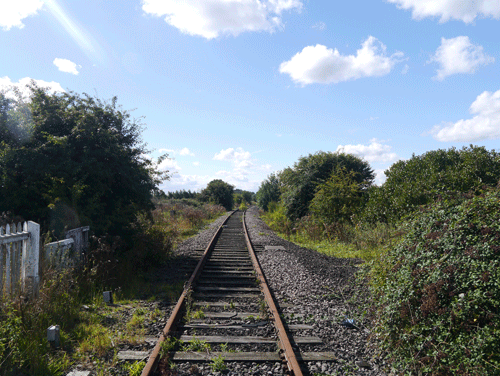
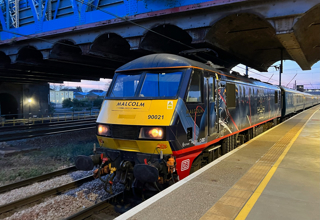
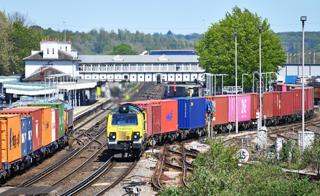
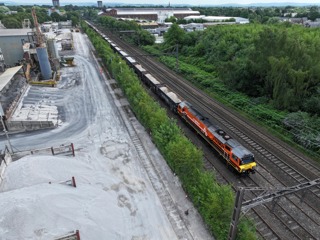
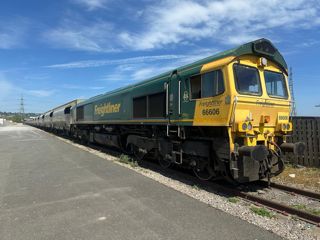
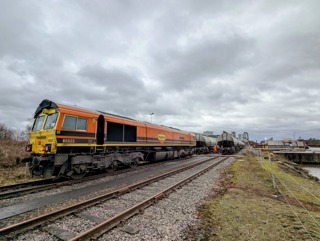










Login to comment
Comments
No comments have been made yet.